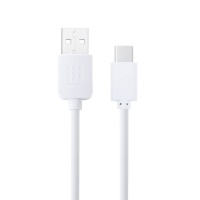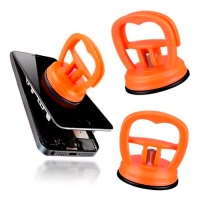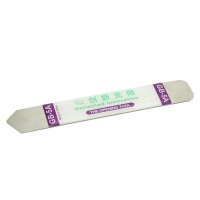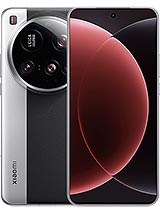 Repair parts Xiaomi 15 Ultra
Repair parts Xiaomi 15 Ultra

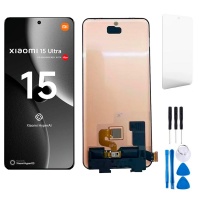
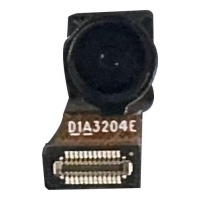


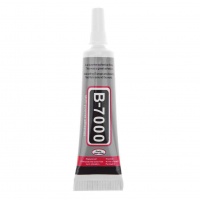
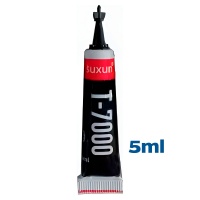
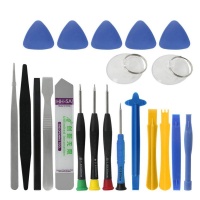
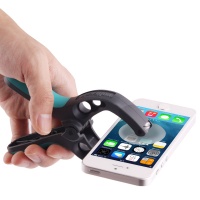

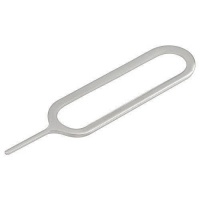

Receive it on tomorrow friday 12 december
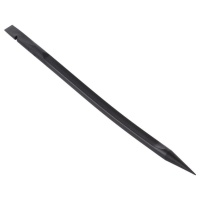
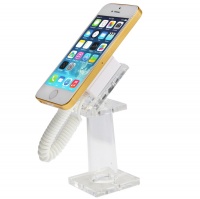
Replacement Parts for Xiaomi 15 Ultra: The Definitive Guide to Repairing and Maintaining Your Mobile
Welcome to the most comprehensive guide on replacement parts for the Xiaomi 15 Ultra, your reference centre at iLevante.com. If you've come this far, it's likely that your magnificent device needs a repair or, as a proactive user, you want to get to know the inner workings of this technological gem. The Xiaomi 15 Ultra is not just a phone; it's a statement of intent, a concentration of the highest photographic and performance technology. However, even titans can have accidents. An unfortunate drop, the natural wear and tear of the battery, or a small component that stops working shouldn't mean the end of your investment.
In an era where the right to repair is gaining increasing importance, at iLevante.com we firmly believe in giving a second, third, or fourth life to your devices. Repairing your Xiaomi 15 Ultra is not only an economically smart decision but also an act of environmental responsibility. Throughout this article, we will dissect each key component with surgical precision, from its revolutionary screen to the tiniest charging board. We will provide you with the necessary technical knowledge to diagnose problems, understand the different qualities of replacement parts and, if you dare, carry out the most common repairs yourself. Let's start bringing your Xiaomi 15 Ultra back to its full glory!
The Xiaomi 15 Ultra's Screen: A Universe of Pixels That Deserves to be Perfect ✨
The screen is our window to the digital world, and in the case of the Xiaomi 15 Ultra, it's a work of art. It is expected to feature a 6.73-inch LTPO AMOLED panel with a WQHD+ resolution, capable of displaying 68 billion colours and reaching peak brightness levels of up to 3000 nits, all protected by the robust "Xiaomi Shield Glass". When this window cracks or fails, the experience is ruined. Fortunately, there are multiple options for its replacement, each with its own characteristics and price range.
Delving into the Technology: OLED vs. LCD
To make an informed decision, it's crucial to understand the fundamental difference between the two major families of screen technologies. LCD (Liquid Crystal Display) screens, such as TFT or INCELL, work with a backlighting system, a kind of constant "torch" that illuminates the liquid crystal pixels to display colours. This means that to show the colour black, the pixels try to block that light, but they never fully succeed, resulting in a dark grey and higher energy consumption, as the backlight is always on.
On the other hand, OLED (Organic Light Emitting Diode) screens, like the original AMOLED in your Xiaomi, are revolutionary. Each pixel is an organic diode that emits its own light independently. This means that to show black, the pixel simply turns off. The result is a pure, absolute black, infinite contrast, and significant energy savings, especially with dark interfaces. Furthermore, by not needing a backlight layer, OLED screens are considerably thinner and lighter.
Replacement OLEDs: "Hard" or "Soft"?
In the world of OLED replacement parts, you will come across two terms: "Hard" and "Soft". The original screen of a high-end device like the 15 Ultra is a Soft OLED type, built on a flexible plastic substrate that makes it more resistant to impacts and allows for curved designs. Soft OLED replacement parts are the highest quality option, as they replicate this flexibility and durability. In contrast, Hard OLED replacements use a rigid glass substrate. They offer the same colour quality and pure blacks as a Soft OLED, but are more fragile and susceptible to breaking from drops or slight twists. They are a more economical alternative, but with a compromise on durability.
Comparison of Screen Qualities for Xiaomi 15 Ultra
Here is a table to quickly visualise the differences and choose the one that best suits your needs and budget:
| Technology | Colour Quality | Black Level | Energy Consumption | Thickness | Estimated Price |
|---|---|---|---|---|---|
| Original (LTPO AMOLED) | Excellent (Factory Calibration) | Pure (Pixels off) | Very Efficient | Minimal | High |
| OLED (Aftermarket) | Very Good | Pure (Pixels off) | Efficient | Minimal | Medium-High |
| INCELL | Good | Greyish (Backlit) | Moderate | Medium | Low-Medium |
| TFT | Acceptable | Greyish (Backlit) | High | Thick | Low |
The Xiaomi 15 Ultra's Battery: Diagnosis and Solutions for Poor Battery Life 🔋
The battery is the energy heart of your mobile, but its lifespan is finite. With each charge cycle, its maximum capacity degrades slightly. For the Xiaomi 15 Ultra, we expect a Li-Polymer type battery with a capacity of 5000 mAh for the global version, whose reference model number will likely be BP51 or BM5Y, following the naming convention of its predecessor.
When is it Time to Change the Battery? Key Symptoms
Your mobile will give you clear signs when the battery is nearing the end of its life. Pay attention to these symptoms:
- Accelerated Draining: The most common symptom. If you have to charge your mobile several times a day with the same usage that previously lasted a full day, the battery has degraded.
- Sudden Shutdowns: The phone suddenly turns off, despite showing 20%, 30% or even more remaining charge. This indicates that the battery can no longer provide a stable voltage.
- Excessive Overheating: It's normal for the mobile to get a little warm when charging or playing games, but if you notice the back getting hot to the touch for no apparent reason, it could be a sign of an internal battery failure.
- System Slowdown: A faulty battery may not deliver the necessary power to the processor, causing the phone to feel slow or freeze. If performance improves when plugged in, the battery is the culprit.
- Only Works When Plugged In: An extreme case where the mobile turns off the moment you unplug it from the charger.
- Physical Swelling (Danger!): If you notice that the back cover is bulging or the screen is lifting at the edges, it is an unmistakable sign that the battery has swollen. This is a safety risk, as a swollen battery can damage other components and even leak or catch fire. Proceed with its replacement immediately.
The World of Batteries: OEM vs. ODM and Why It Matters
When looking for a replacement part, you may come across the term OEM (Original Equipment Manufacturer). This concept is key to a quality repair. An OEM battery is one manufactured by the same company and under the same technical specifications (capacity, voltage, safety circuits) as the original battery that Xiaomi installs in its phones. The only difference is that it is sold without the brand's logo. Choosing an OEM battery from iLevante.com is the smartest way to ensure your Xiaomi 15 Ultra will regain its original battery life. On the other hand, there is the term ODM (Original Design Manufacturer), where a manufacturer designs and produces a battery based on requirements, but without being the original supplier for the brand. The quality of these can vary. Therefore, the OEM option will always offer you maximum peace of mind and performance.
Detailed Guide to Replacing the Battery
Changing the battery is one of the most rewarding repairs. Although it requires patience, the general steps are manageable. You will need specific tools and to follow the steps meticulously.
- Step 1 - Power Off and Heat: Completely turn off the device and remove the SIM tray. Gently heat the edges of the back cover with a heat gun (at about 100°C) or a hairdryer to soften the adhesive that seals it.
- Step 2 - Open the Device: Use a suction cup to create a small opening and then insert a plastic pick to cut the adhesive around the perimeter. Proceed slowly and carefully, especially in the camera module area. Be careful with any flexible cables connected to the cover.
- Step 3 - Access the Battery: Once the cover is removed, locate and unscrew the protective plate that covers the motherboard connectors. This is usually a plastic or metal cover held by several Phillips screws.
- Step 4 - Disconnect and Remove: With a plastic tool (spudger), carefully disconnect the battery connector from the motherboard. This is always the first connector you should release. Then, pull the adhesive tabs designed to remove the battery. Do this slowly, steadily, and at a low angle. Never use metal objects to pry the battery; you could puncture it and cause a fire.
- Step 5 - Install and Seal: Place the new battery in its place, connect its flex cable to the motherboard, and screw the protective cover back on. Meticulously clean the old adhesive residue from the frame and cover. Apply new adhesive (B7000 or specific pre-cut tapes) before placing the back cover, pressing firmly and using clamps or rubber bands to ensure a good seal for a few hours.
Back Cover: Restore Your Device's Elegance and Protection
The back cover is not just an aesthetic element; it is the first barrier of protection for the delicate internal components against dust and moisture, being key to maintaining the IP68 water resistance certification. A broken or cracked cover compromises this protection and detracts from the appearance of a high-end mobile. At iLevante.com, we offer back covers in the official projected colours for the Xiaomi 15 Ultra: Black, White, Blue, and an exclusive Titanium Grey, available in the original finishes such as vegan leather or glass/ceramic, so you can restore your mobile to its factory look or even change its style. The replacement process is similar to the first steps of replacing the battery: it requires heating the edges to soften the adhesive and using plastic tools to carefully separate it, finishing with the application of new adhesive for a perfect seal that restores structural integrity and resistance to the elements.
Beyond the Basics: Other Critical Components and Their Solutions
In addition to the most common failures, there are other components that may need attention. Knowing them will make you an expert in maintaining your device.
USB-C Charging Connector Board
This is one of the ports that suffers the most physical wear. If your mobile doesn't charge, the connection is intermittent, the cable "wobbles" in the port, fast charging doesn't activate, or the computer doesn't recognise it, the problem is usually here. Before assuming the worst, the first step is always a visual inspection. With the mobile turned off, use a torch and a non-conductive tool (like a wooden toothpick) or compressed air to carefully clean any lint or debris. If the problem persists after cleaning, replacing this small board (also called a charging flex) is the definitive solution. It is a low-cost repair that restores not only charging but also full-speed data transfer (USB 3.2) and DisplayPort functionality.
Camera Modules: When Your Photographic Eye Fails
The camera system of the Xiaomi 15 Ultra is its crown jewel. A failure here is catastrophic for the experience. Symptoms of a faulty camera module include: blurry photos that do not improve after cleaning the lens, spots or black dots in the image, the camera app closes unexpectedly, shows a black screen, or gives a "Cannot connect to camera" error. Each camera (main, telephoto, wide-angle, periscope) is an individual module that can be replaced. The process involves opening the phone, disconnecting the connector of the affected module from the motherboard, and replacing it with the new one. It is a delicate but straightforward repair that can save a camera system worth over a thousand pounds.
Small Components, Big Problems
- Loudspeaker (Buzzer): Can't hear ringtones, alarms, or audio from videos? Does the sound come out distorted or metallic? The culprit is the bottom speaker or buzzer. It is a different component from the earpiece for calls, and its replacement is relatively simple once the phone is opened.
- Earpiece Speaker: If during a call you hear the other person very quietly, with interference, or not at all, but the loudspeaker works fine, the problem is with the top earpiece speaker.
- Vibration Motor: If your mobile has stopped vibrating for notifications or the vibrations are weak and noisy, the haptic motor may have broken or become disconnected.
- Camera Lens Protector Glass: Sometimes, what breaks is not the camera itself, but the external glass that protects it. A crack in this glass can cause reflections, glare, and a lack of sharpness in all your photos. It is a low-cost repair that recovers 100% of the image quality without needing to change the expensive camera modules.
The Technician's Survival Kit: Essential Tools and Precautions 🛠️
Embarking on a repair without the proper equipment is like navigating without a compass. To ensure success and not cause more damage, it is essential to have the right tools and follow some golden rules.
The Repairer's Arsenal: The Tools You'll Need
- Precision screwdriver kit: With Phillips, Pentalobe, and Torx bits, as required by your model.
- Heat gun or hairdryer: Indispensable for softening the adhesives on the back cover and screen.
- Suction cups: To lift the screen or back cover without forcing the edges.
- Plastic opening tools (Spudgers and picks): Essential for cutting adhesive and disconnecting connectors without causing short circuits or damaging delicate flex cables.
- Precision tweezers: For handling tiny screws and connecting flex cables with accuracy.
- High-quality adhesive: B7000, T7000, or pre-cut double-sided adhesive tapes to safely reseal the device.
- Anti-static wrist strap: To protect sensitive electronic components from your body's static electricity.
Golden Rules: Precautions for a Successful Repair
- Disconnect the battery first: Before handling any other component, always disconnect the battery to avoid accidental short circuits.
- Organise the screws: Use a magnetic mat or small containers to keep the screws organised. They are not all the same size!
- Be patient with the adhesive: Do not force it. If a component does not give way, apply a little more heat. Patience is your best ally.
- Be careful with flex cables: They are extremely fragile. Never pull on them; use a plastic tool to gently lift their connectors.
- Accept the loss of warranty and water resistance: Opening the phone will void the manufacturer's warranty. Furthermore, even if you use new adhesive, it is very difficult to perfectly restore the original IP68 certification. Avoid submerging the phone after a repair.
The Technician's Perspective: Is It a Hardware or Software Fault? ⚙️
Before picking up a screwdriver and buying a replacement part, it is essential to rule out that the problem is software-related. Operating system updates, like HyperOS, sometimes introduce errors (bugs) that can be mistaken for hardware faults. Following this diagnostic process will save you time and money.
Common HyperOS problems that look like hardware faults:
- Post-Update Battery Drain: It is very common for the battery to drain faster right after a major update. The system needs a few days and several charge cycles to optimise itself. Before blaming the battery, wait 2-3 days and perform a battery calibration: use the mobile until it turns off by itself (0%), leave it off for an hour, charge it to 100% without interruptions while it is still off, and once charged, leave it connected for another half hour.
- Random Reboots or Freezes: If your mobile reboots on its own or the screen freezes, it could be an operating system bug. Xiaomi usually fixes these faults in subsequent updates. Make sure you always have the latest version of HyperOS installed, and you can even try reinstalling the latest package from the update settings.
- "Ghost Touch" or Phantom Taps: This is the classic dilemma. The screen acts as if someone is touching it.
- Software steps to try first: 1) Remove any case or screen protector. 2) Restart the mobile. 3) Check for HyperOS updates. 4) Disable gestures like the three-finger screenshot, as it has been reported to cause conflicts. 5) Reduce the pointer speed in the additional settings. 6) As a last software resort, perform a factory reset (after a backup).
- When it's hardware: If after performing all these steps the problem persists, especially if it worsens when pressing certain areas of the frame, then it is an indication that the digitiser (the screen's touch layer) is failing, and a complete replacement of the screen module is needed.
- Connectivity Faults (Bluetooth/WiFi): Intermittent Bluetooth faults have been reported on some models after updating to HyperOS. Before thinking the antenna is broken, check if there is a system update that fixes it, as Xiaomi has acknowledged and corrected these problems in the past.
Your Xiaomi 15 Ultra Deserves a Second Chance
Repairing a device of the calibre of the Xiaomi 15 Ultra is a smart, sustainable, and rewarding decision. Extending its lifespan not only saves you the cost of a new terminal but also reduces the environmental impact. Many of the most common problems, such as a broken screen, a depleted battery, or a faulty charging port, have direct and affordable solutions that are within your reach.
We hope this exhaustive guide has equipped you with the knowledge and confidence to face any repair. Understanding the difference between an OLED and an INCELL screen, knowing when your battery needs changing, or being able to diagnose a software fault makes you an empowered user. With the information from this guide and the high-quality replacement parts you will find at iLevante.com, you have the power to restore your mobile's full functionality and splendour. We invite you to explore our complete catalogue of parts for the Xiaomi 15 Ultra. If you have any questions, our team of experts is at your disposal to advise you. Start your repair with confidence and give your technology the long life it deserves!

